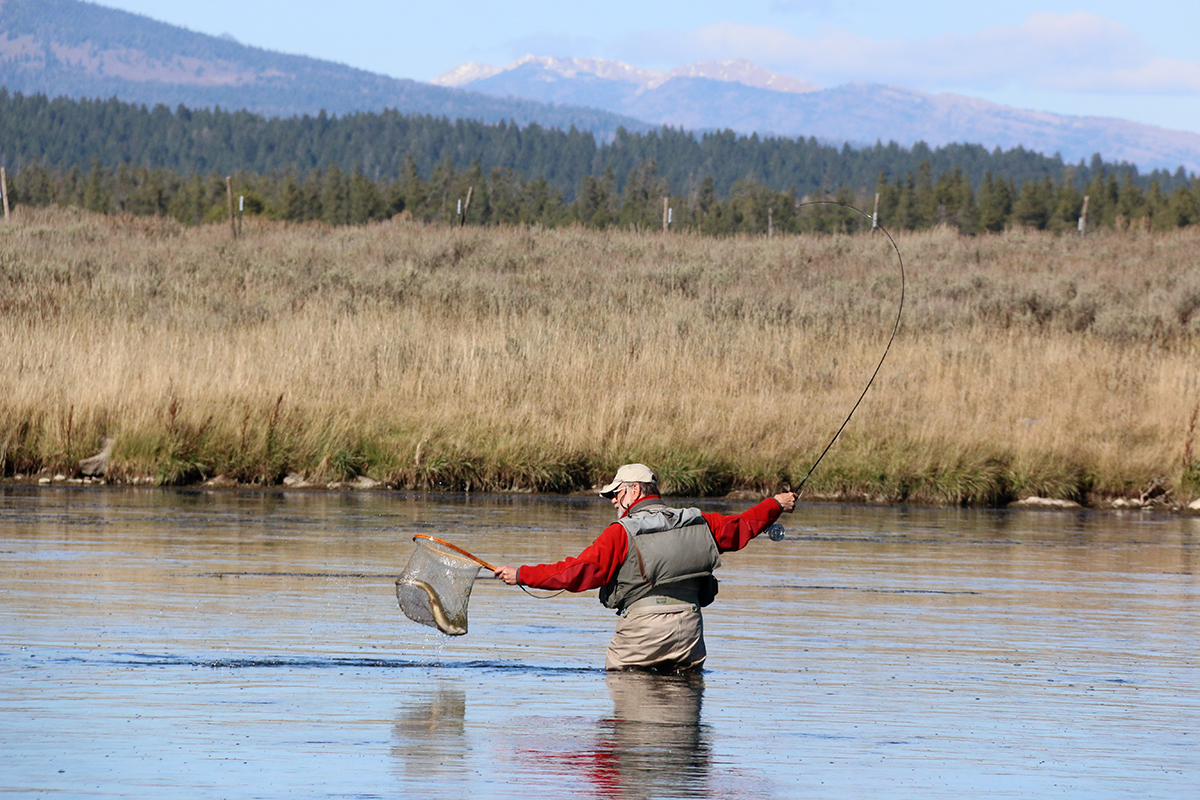Words by René Harrop. Photos by Bonnie Harrop.
In the upper reaches of Henry’s Fork country, September can seem as a season unto itself. This is especially apparent within the mountain community of Last Chance, Idaho where cultural rhythms bend almost instantly to a 30 day period when various elements from the 4 seasons comprising a complete year are present.

With temperatures that can reach 80 degrees on some days, the first few weeks of the month generally see an extension of summer hatches of PMD and Callibaetis mayflies with several species of caddis joining the mix.
The crackling of hoppers in the withering grass along the trail into Harriman reminds us that these and other terrestrials like ants and beetles can equal or exceed the aquatic varieties in their importance to the contentment of trout. But there is more than a hint of autumn in the chill of morning and the changing leaves will never wait until October to display their full colors.

A heavy snowfall or subzero temperatures are seldom a surprise, especially after mid- month, and winter clothing stands ready regardless of how distasteful this notion can be at such an early date.
Water levels through the second half of September are reflective of spring flows in the Henry’s Fork, and hatches of Baetis and midges are similar if not identical to what appears in April. Fortunately, Mahogany Duns prevent matching the hatch from becoming an exclusive game of minute flies and 7X tippets. At size 16, these hardy, brown mayflies provide visual contrast to those other insect groups that may average only size 22.
 Technically, September is a transitional month between summer and fall but for those who do not leave the Henry’s Fork, it is something more.
Technically, September is a transitional month between summer and fall but for those who do not leave the Henry’s Fork, it is something more.
Around the local fly shops guides and their clients will linger a little longer until the morning temperature reaches a comfortable level, and those who fish at this time of year are typically more serious than the average visitor.
For many residents, waders will be periodically exchanged for hunting camo, and fly rods must now compete with bows and arrows for attention. The distance sounds of shotgun fire announce the opening of grouse season, and the bugle of a bull elk is a call to the forest for those of the hunting persuasion.
 Along the river migratory birds begin to assemble into great flocks in advance of their annual departure to lower elevation. Like bugling bull elk, the call of Canadian Geese is a sound of September as well as an inevitable reminder that winter may lie only weeks away. But when positive conditions align, a September day on the Henry’s Fork can come closer to perfection than at any time of year.
Along the river migratory birds begin to assemble into great flocks in advance of their annual departure to lower elevation. Like bugling bull elk, the call of Canadian Geese is a sound of September as well as an inevitable reminder that winter may lie only weeks away. But when positive conditions align, a September day on the Henry’s Fork can come closer to perfection than at any time of year.
Perhaps it is the urgency created by knowing that the end of pleasant weather draws near that motivates the need to put sophisticated behavior aside in favor of more primal desires.
In the high country, summer is a pitifully short season in which September is often only a footnote. But for mountain folk, September is the most precious month of the year. And yes, we are lucky people.


Leave a Reply